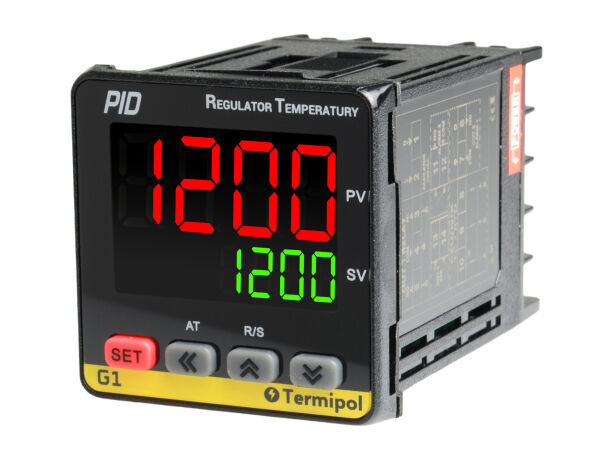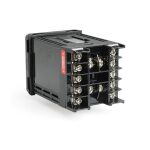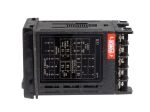



Industrial temperature controller with PID or ON-OFF control. Dimension 48x48mm, SSR voltage control output or 3A relay output.
 Exists
Exists
 Payment on delivery, Traditional Bank Transfer (Pro forma), Fast online payments
Payment on delivery, Traditional Bank Transfer (Pro forma), Fast online payments
The product is shipped within 24 hours.
We complete the order within 24 hours.
The product is covered by a one-year warranty.
You can return the product within 14 days.
| Power supply: | 185-230 VAC |
| Regulation: | On/Off, PID |
| Hysteresis: | 0,1~1000,0° |
| Output: | Relay, Voltage (SSR) |
| Max. Load: | 3 A |
| Display: | PV (Present Value), SV (Set Value) |
| Sensor Service: | B, CU100, CU50, E, J, JPT100, K, N, PT100, R, S, T |
| Working Mode: | Cooling, Heating |
| Emergency Exit: | AL1 przekaźnikowe (3A), AL2 przekaźnikowe (3A) |
PID (Proportional-Integral-Derivative) is an industrial temperature control system with PID or ON-OFF control. It has a 48x48mm dimension, SSR voltage output control and 3A relay output control. It is a professional, industrial, electronic temperature control PID with auto-tuning feature. It is characterized by high measurement accuracy. It also has the ability to handle both SSR relay and normal contactor. It is suitable for use with injection molding machines, extruders, heat tunnels, heating chambers, soldering stations, packaging machines, welding machines, and cooling devices. It works with temperature sensors and thermocouples: - (RTD) resistive: PT100, JPT100, CU50, CU100 - (TC) thermocouples: J, K, E, S, T, B, R, N - (Signal) 0 ~ 50mV, 0 ~ 400Ω. The temperature control range is up to 3200°C. The G1 series regulators are designed for mounting in control cabinets or distribution boards. To mount the regulator in the cabinet, use the mounting elements included in the kit. This modern temperature control solution in these machines is the basic parameter for proper production process. PID is widely used in industrial temperature control applications. It is used to maintain a desired temperature setpoint by automatically adjusting the output of the heating or cooling device. It is also used to control the speed of motors, pressure, flow rate, and other process variables.PID is an internal algorithm stored in the memory of the controlling device. It can be treated as an additional feature that improves control and regulation as it adapts to the system in which it is installed. Without automatic regulators, all regulation tasks would have to be done manually!
PID Regulation
Fig. Schematic - PID Regulation
PID regulation is used for precise temperature regulation without hysteresis (deviation). Control is carried out here by pulsing the control output, in this case it is advisable to use solid state relays (SSR), which are not sensitive to frequent switching.
More information on our blog: What is PID?
Auto-tuning Function
Fig. Schematic - Auto-tuning Function
The regulator has an auto-tuning function, which is only activated once after the regulator is installed in the machine or furnace. It consists in the fact that the regulator itself selects the PID values in order to maintain the set temperature as optimally and accurately as possible. The PID parameters can also be changed manually. The regulator can maintain the temperature on the extruder with an accuracy of 0.1°C.
More information on our blog: PID Setting in Practice.